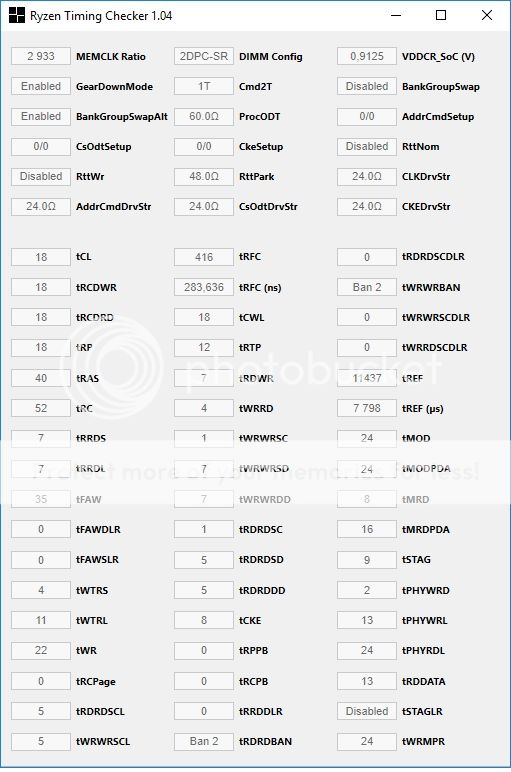Dear William,
If you want to change the settings you have now:
I would start by setting tRAS to 36 (loosest two timings of the ones before, 18+18 in this case) and the tRC to 54 (36+18).
If your tighten or loosen the first timings later and the two loosest timings are odd numbers, I'd add 1 to tRAS so that my tRC ends up as an even number.
As for the secondary timings, I would start by setting tRDDS to 6, tRDDL to 8 and tFAW to (tRDDL*4) 32 or 33 (tRDDL*4+1) if it isn't stable.
If these are stable you can lower it further, for example to 4, 6, 24/25.
If the first set isn't stable on a lower voltage I'd start by changing tRDDL to 9 and tFAW to 36 or 37.
Going to tWTWL and tWR, I never set the 2nd timing lower then the first until I'm done tightening everything else.
I normally start with tRDRD and tWRWR at 4.
However, as I know you have Samsung chips on your memory, I'd start with 3,3 and if stable, I would even try 2, 2.
As for tRFC, even my relatively cheap Hyunda/Hynix memory is completely stable at a tRFC of 300 ns.
As for tCWL, tRT, tRDWR and tWRRD.
As your tRT is 12, I'd tighten the rest to start with.
For example, 16, 12, 6, 3.
I don't really mess with the rest of the timings much, unless one looks really out of place.
Yours look fine to me.
This is simply the way I start out with setting memory timings, no more, no less.
The Stilt has actual experience with the different DDR4 chips, so he knows the odds and inns of the different modules.
With kind regards,
stAbb
Edit:
JEDEC 2133 loads properly for me after a BIOS update. It might indeed have been that GearDownMode was forced through the BIOS and I just didn't realize it at the time.

As a bonus, .vodka explained everything you need to know about it.




